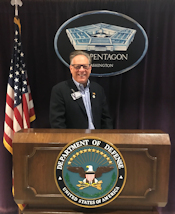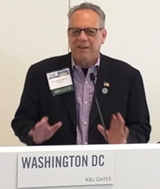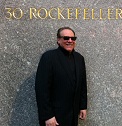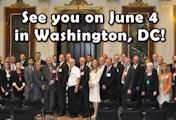NanoBusiness Interview: Jason Hartlove, CEO, Nanosys / Nano Conference 9/26-27, Boston
Posted on September 7th, 2011 | No Comments »
Great interview this month with Jason Hartlove, President & CEO of Nanosys, Inc. Before we begin the interview, I would like to remind the Nanotechnology Community that our 10th Annual NanoBusiness Conference http://www.internano.org/nms2011/ is less than 3 weeks away.
The conference is being held September 25th-27th at the Seaport World Trade Center in Boston, MA.
http://www.seaportboston.com/meetings-and-events/overview.aspx
Our Conference agenda http://www.internano.org/nms2011/program has over 50 speakers from our Nano Community.
CONFERENCE REGISTRATION IS OPEN
Industry/Government $400
https://regstg.com/Registration/RegForm.aspx?rid=9363e8fe-34c5-4188-9ecb-f1a5852ef5f3
University/Academia $200
https://regstg.com/Registration/RegForm.aspx?rid=9363e8fe-34c5-4188-9ecb-f1a5852ef5f3
In this month’s interview, we talk to Jason Hartlove, President & CEO of Nanosys, Inc. Jason has a track record of building and leading innovative companies and business units by driving emerging technologies from R&D to market application. Prior to joining Nanosys he was President of MagnaChip Semiconductor and was responsible for managing all business activities for the Imaging Solutions Division headquartered in Seoul, South Korea. Prior to MagnaChip, Mr. Hartlove served as Vice President and General Manager for the Sensor Solutions Division of Agilent Technologies and its parent company Hewlett-Packard. Working in collaboration with Hewlett-Packard Laboratories from 1996, he developed the first commercial implementations of optical position sensing used in optical mice and CMOS image sensor technologies for the company. Mr. Hartlove is the author of more than 20 patents, including the winner of the Hewlett Award in 2004 for best patent in Agilent Technologies. He has also worked in a variety of manufacturing, R&D and marketing roles in semiconductor technologies including MEMS, III -V, bipolar, CMOS and BCD process technologies. Mr. Hartlove holds a B.S. in electrical engineering from UCLA and has completed graduate work at the Anderson School of Management at UCLA.
In our interview, we discuss Nanosys’ strategic direction under Jason’s leadership and some of the company’s innovative nano-enabled lighting and energy storage products. We hope you enjoy the interview with Jason Hartlove. – Steve Waite, Director of Research and Strategy
SW: It is a pleasure to speak with you, Jason. We thank you for taking time out of your busy schedule to talk about Nanosys. You’ve been the CEO of Nanosys since the fall of 2008. Tell us how you have repositioned the company strategically coming out of the Great Recession and the rationale for it.
JH: Thank you, Steve. I’d be happy to share my experience with Nanosys. Since taking the role of CEO, I’ve focused the company on developing products based on our architected materials that solve tough problems in high growth-potential markets. Taking a look at the company when I arrived we had one of the largest nanotech patent portfolios in the world and a uniquely experienced R&D staff. But barely any of this technology was in use in industry. It was clear that while we were well positioned with a great science and technology foundation, we had to drive the commercialization if we wanted to see a good outcome in any reasonable period of time.
Solid state lighting and energy storage are two such markets that the company is attacking today. In both cases it was immediately obvious in talking to customers that simply selling them raw materials, such as kilograms of quantum dots or kilotons of nanowires was not going to be a workable strategy. They did not have enough experience with these new materials to do the process integration, or to redesign their processes to accommodate them. So, in order to succeed, we needed to do some of the heavy lifting ourselves in terms of taking these amazing materials and engineering them into “process ready” components or components that fit seamlessly into existing manufacturing paradigms.
SW: Your description of Nanosys as an “architected materials solution company” sounds like a recipe for accelerating nano-enabled innovation in the years ahead. What is the role of the science of nanotechnology in bringing innovative, architected materials solutions to the market?
JH: Nanotechnology is what gives us the novel and highly valuable properties of our solutions, but our customers need more than just this. They need these nanomaterials to be integrated into inks that can be printed, films that can be deposited, etc. To do so requires us to become proficient in a variety of disciplines. For example, to develop a product like Quantum Dot Enhancement Film (QDEF™) for high color gamut displays we relied on contributions from organo-metalic chemists, polymer chemists, organic chemists, physicists, optics experts and more. So, the end result, a optical sheet which appears to be a fairly simple solution at face value, is in fact a very complex optical component that required a sophisticated approach..
SW: Nanosys has a large nanotech patent estate whose value is difficult to estimate today. How many nanotech patents has the company been issued to date and what is the strategy with respect to monetizing Nanosys’ large patent portfolio?
JH: Nanosys was founded and built upon a strong IP portfolio, which today includes over 750 patents and pre-grant applications. While each of those has an inherent value, the real value is in taking the technology to market and every one of our patents plays a role in the commercialization of our products. For example, we hold roughly 400 patents and applications for the various technologies and processes that went into our newest product, the Quantum Dot Enhancement Film (QDEF™).
SW: Nanosys is focused on two areas of commercialization today: LED lighting solution and energy storage. What is the rationale behind focusing on those two markets?
JH: When I came on board Nanosys had developed technologies across a broad range of applications. Looking at both our internal development progress and market potential there was an excellent alignment with both industries. Consumers and manufacturers alike have expressed great need for better quality, high efficiency color displays and longer lasting batteries. For example, we see the addressable markets for our lighting solutions growing to over $900M in 2012. With the adoption and growth of electric vehicles, the lithium ion battery market could be greater than $50B per year by 2020. The core technologies we have at Nanosys are well aligned to provide unique value in these markets. So, the combination of competence, deep scientific knowledge of materials that provide a strong value to the markets, and the growth rate of the markets are all factors that we weighed in making the decision on where to focus.
SW: Nanosys’ Quantum Dot Enhancement Film (QDEF™) was featured earlier this year in The Economist. It appears you may have a hit product in the lighting market on your hands. Tell us about the technology and its applications in the marketplace.
JH: Sure. Quantum Dot Enhancement Film, or QDEF™, is an optical film component for LED backlit LCD displays. Based on Nanosys’ proprietary high efficiency Quantum Dot Phosphors, the QDEF™ enables a new level of LCD display performance by providing a high quality, tri-color white light from a standard blue LED light source.
The QDEF™’s active material is composed of Nanosys’ proprietary, high efficiency quantum dot phosphors. Larger than a water molecule, but smaller than a virus, these tiny phosphors convert blue light from a standard GaN LED into different wavelengths based upon their size. Larger dots emit longer wavelengths (red), while smaller dots emit shorter wavelengths (green). By blending together a mix of dot colors Nanosys can engineer a new spectrum of light. This allows LCD manufacturers to accurately match their LED backlight to their LCD color filters to achieve the best possible color and efficiency performance. The result is professional photo and cinema level color performance in the palm of your hand or on your living room wall.
Nanosys Quantum Dot Enhancement Film (QDEF™) enables LCD display manufacturers to deliver a better visual experience using their existing manufacturing processes, at a fraction of the cost of alternatives. Architected from quantum dots, Nanosys’ QDEF™ improves color gamut, saturation and brightness from LED sources using widely available material, while delivering higher power efficiency and lower cost than alternatives like OLED.
SW: Let’s talk about Nanosys’ energy storage technology. What is the nano-enabled energy technology you are developing and what type of near term commercial applications do you foresee in the market?
JH: Improvements in battery capacity have historically been quite slow, far outpaced by our demand for more features in our mobile devices and, now, range in our cars. People in the battery industry talk about a “Moore’s Law” for batteries, which equates to about a decade per doubling of capacity. Part of the problem is that, looking at the periodic table, some of the best elements in terms of energy storage potential are also the hardest to work with. For example, although it has a very high capacity for lithium insertion, no one has been able to make a stable battery using bulk silicon. So, manufacturers have been limited to making process improvements using graphites, things like squeezing more materials onto their electrodes by compressing them or using thinner and thinner electrode substrates. However, there is a practical limit to process improvements and the rate with which they can be made.
This is where Nanosys comes in- by architecting materials we are able to solve some of the problems limiting the use of new compounds. Our SiNANOde™ material, a silicon-carbon composite anode material for lithium-ion batteries, has a unique morphology that manages lithium insertion in a way that doesn’t cause cyclic damage. This mitigates the swelling effect from conventional, non-architected or bulk silicon structures.
The end result is a battery that holds more than double the charge without significant changes to manufacturing process. This kind of dramatic change means you can start thinking about achieving the industry’s cost goal of $250/kWh and taking EV adoption to the next level.
As far as adoption, we see immediate applications for SiNANOde™ in IT devices like cell phones, digital cameras, and notebook computers. Qualification timing is relatively short for electronics vs. automotive applications, which take quite a bit longer. So we are working here first and planning to move into EVs over time.
In the medium term we think that SiNANOde™ is well suited for use in traction applications such as EV, plug-in hybrid (PHEV) and personal mobility (LEV). Energy density remains a critical problem for the electric car. If you look at a typical EV today they are wasting a lot of energy carrying the weight of the batteries down the road.
SW: What kinds of challenges do you see in the future for Nanosys in terms of commercializing innovative nano-enabled products?
JH: I see our biggest challenge as being able to scale up manufacturing to keep up with demand, which isn’t a bad problem to have. Our facility in Palo Alto is more than capable of meeting current customer demand, but we also have a plan in place to increase our capacity while managing quality control and distribution.
SW: Nanosys has a global reach with key strategic partners all over the world. Do you see a big competitive advantage to having a global reach in nanotechnology today?
JH: Absolutely. If you are working with OEMs like we are, then you have to have a presence in their countries of operation. Last year, we opened an office in Korea specifically for this purpose. We believe very strongly in maintaining our core operations here in the U.S. due to the skilled labor available here, but also operate globally with the largest automobile and electronics manufacturers in the world.
SW: Last question for you today, Jason. Where do see Nanosys heading in the next 3-5 years?
JH: I see Nanosys-enabled products in the hands of hundreds of millions of consumers providing higher quality and efficient displays, longer lasting electronics and being a part of EVs that match combustion vehicles in range capacity.
SW: Thanks again for your time, Jason. It was a pleasure speaking with you. We wish you and your colleagues at Nanosys all the best in the future.
Looking forward to seeing you in Boston at our 10th Annual Conference.
Regards,
Vincent Caprio “Serving the Nanotechnology Community for Over a Decade”
Executive Director
NanoBusiness Commercialization Association
203-733-1949
vincent@nanobca.org
www.nanobca.org




